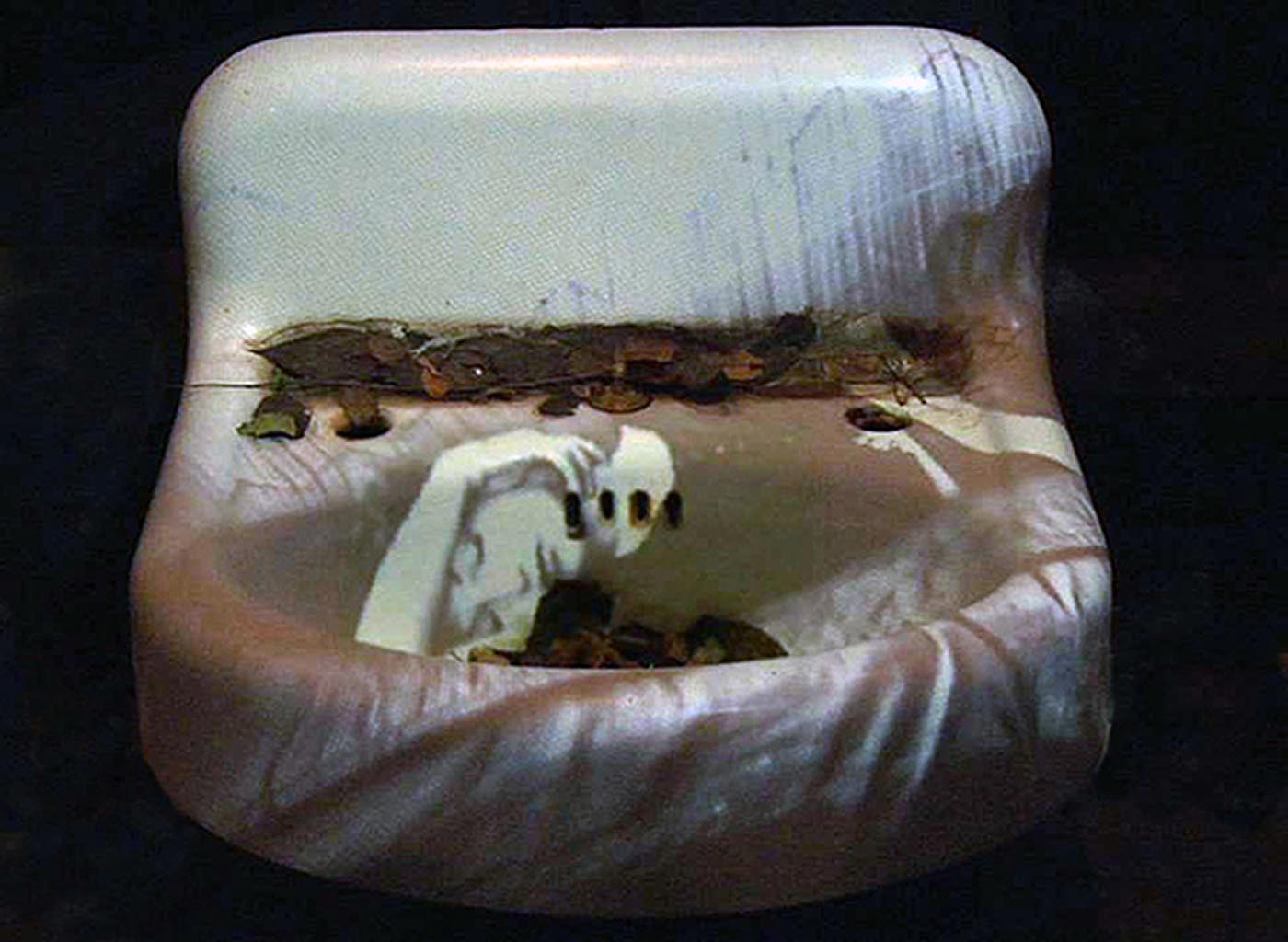
MAYA DEREN’S SINK
,
Light projections in Deren’s intimate space evoke a former time and space providing entree into the homes of an influential filmmaker we will never know. The film reclaims the spaces that inspired her work in order to share it with audiences. Time and space are collapsed as film locations of the 40’s are re-imagined in the present.
Performances by an actor based on Deren’s film and writing as well as overlooked biographical insights reveal a creative personality untouched by convention. Voices from the past speaking from doorways, windows and picture frames include the current L.A. and N.Y.C. home owners, Teiji Ito’s second wife, Judith Malvina, Carolee Schneemann, Ross Lipmann and others. Through collapsing time and extending space, a unique architectural portrait of the artist is created.
The experimental soundtrack is compiled and augmented by the music of Teiji Ito (Maya’s third husband) and Tavia Ito, Teiji’s daughter.
BACKGROUND STATEMENT
“And what more could I possibly ask as an artist than that your most precious visions, however rare, assume sometimes the forms of my images.” Maya Deren
Deren is often referred to as the archetypal example of independence, a filmmaker who managed to avoid the institutional regulation of American cinema. Deren screened her films on her living room walls to interested audiences, occasionally exhibiting to critics like Manny Farber and James Agee. Her aim was to inspire a new generation of avant-garde filmmakers.
Much of my own moving image work has been reconfiguring lost histories, often of women, and bringing them to life again through experimental film. Forty years ago as a student in a Film History class I saw Meshes of the Afternoon and knew I should and could make film. My interest in Deren was reawakened last year when Sally Berger, Assistant Curator, Department of Film, at The Museum of Modern Art in New York City tapped into my Deren research and selected my first 16mm film I Was/I Am (1972) for an upcoming exhibition opening May 15, 2010 that focused on women filmmakers in the permanent collection who were influenced by Deren, Maya Deren’s Legacy: Women and Experimental Film.
I have for years wanted to establish Deren’s NY home at 61 Morton Street as a historic building, and, like so many fans, was desirous of visiting her Los Angeles bungalow where she and Alexander Hammid shot Meshes of the Afternoon.
Location has always been a major concern for me in making work. In Pools (1982), I swam and filmed in the swimming pools of the Hearst Castle to understand the architecture of Julia Morgan. InBent Time (1983) I walked and filmed across the United States at locations of intense energy from the Stanford Linear Accelerator to the Brooklyn Bridge. When I study a place I want to inhabit it to understand in an experiential way its space and time configurations.
It seems so right that I return to Deren and her homes to access the private spaces known only through her films. I hope to ‘open doors’ for others who may not know her work so well. By re-projecting the architectural details from her films back onto the ceilings, walls, floors, cabinets and windows of her homes I call forth her creative spirit and invite viewers, who like me, might have a similar driving curiosity to visit and walk inside the homes where Deren scripted, shot, edited, and projected her films.
The meditation on themes of space and architecture is an investigation of the relationship between private and public spheres embedded within architecture and the body within that space. The spoken script is the words of Maya Deren as written in her letters, notes and An Anagram of Ideas on Art, Form, and Film.
CREDITS
Director: Barbara Hammer
Director of Photography: Erin Harper, Barbara Hammer
Second Camera: K.J. Mohr
Editor: Stephanie Testa, Barbara Hammer
Actor: Bekka Lindstrom
Sound Mix: Stephanie Testa, One Glass Video
Music: Tavia Ito, Teiji Ito (Tenno, Operation Hourglass, Water Music Study, Handwritten, Lifelines), Haitian Music
Critic Voices: Nathan Brisby, James Donegan, T.J. Mannix
Interviews (Voices from the Walls):
Tavia Ito, Musician & Teiji Ito’s daughter
Abby Johannes, Writer
Ross Lipman, Filmmaker & Preservationist
Robert Polito, Writer & Editor of Farber on Farber
Gail Ryan, Tavia Ito’s mother
May Routh, Costume Designer, L.A. home
Jean Reynolds, Writer, N.Y. home
Carolee Schneemann, Artist
Jerry Tallmer, Writer & founder of Village Voice
Alan Wynroth, Actor, N.Y. home
Special Thank YouSally Berger
Florrie Burke
Carolina Guzman
Catrina Neiman
Andrea Weiss
Completion Funding: New York State Council on the Arts
QUOTES
“Hammer’s intense productivity places her on the scale of Brakhage or Warhol as a major force in the independent cinema; Hammer neatly inverts the patriarchal forces implicitly and often ‘invisibly’ at work in independent cinema practice.”
– Wheeler Winston Dixon, The Exploding Eye, A Re- Visionary History of 1960s American Experimental Cinema



